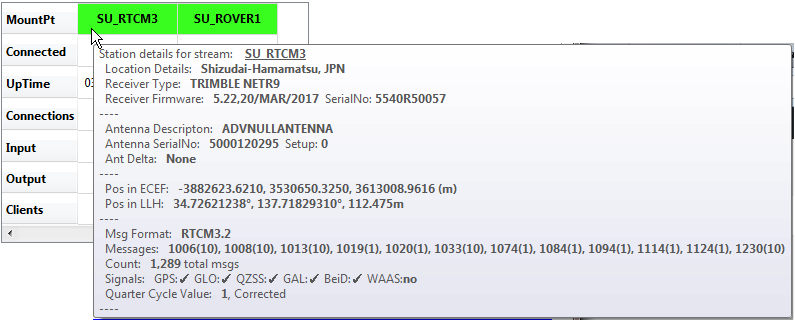The term “Base Station Quarter Cycle Phase Shifts” refers to two bit fields you can find in the 1005 and 1006 message types (of RTCM3). The design choices used by the GNSS manufacturer affects how observations measurement of code and carrier are aligned. This data element is intended to inform the end user what alignment is present.
Here is what the RTCM SC 104 work says about this in summary (there is additional text; purchase the standard itself here if needed).
3.1.8 Handling of Quarter Cycle Carrier Phase Shifts
Some GNSS receiver manufacturers have implemented carrier phase encoding of Version 3 messages 1001, 1002, 1003, 1004, 1009, 1010, 1011, 1012 in a way that carrier phase observations are in phase for all carrier phases of a specific frequency, i.e. they correct for quarter cycle phase shifts. Others retain the quarter cycle offset between the carrier phase observations in the data.
This two-bit value allows three defined states (11 is reserved at this time)
- 0 = unspecified (correction status not known)
- 1 = PhaseRanges are corrected (aligned to to be in phase and therefore no Quarter Cycle bias
- 2 = Phase observations are not corrected.
- 3 = Reserved
Whenever the data stream transmits data a value other than 0 (unspecified), the value is output as part of the tool tip for that stream as shown below. Many, if not most, data streams do not set this value at this time.
Here is a view of the tool tip for a Septentrio base station in Brussels that shows this:

Update
During the Beta Testing with this feature it was suggested we also add the terms “Corrected” and “not Corrected” to the value displayed. This has now been done.

